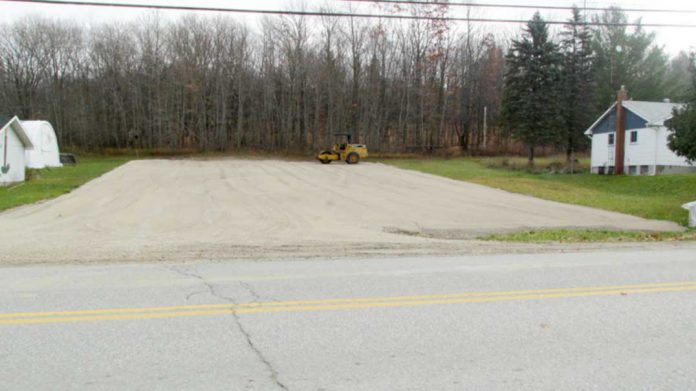With this recent short blast of winter, pretty much everything that was left in the garden has come to an end. Following Mother Nature’s lead, it’s time to bring our discussion of plants suitable for dried flower arrangements to an end as well. There are still many plants that we’ve not looked at so today I will try to briefly touch on as many as possible. Some plants are worthy of an entire article and will likely show up in columns yet to come.
Just this past weekend I was in Toronto on business and while waiting in the hotel lobby I noticed several dried arrangements that were both very simple and yet extremely effective. The neat thing is that they were comprised of a single plant variety that is easily grown in Island gardens. The displays that caught my eye were made entirely of corkscrew willow, or curly willow (Salix matsudana), that had been peeled and placed simply in tall elegant vases. Like all willow plants, corkscrew willow is a winter hardy tree that thrives in damp soil but is capable of being happy in a wide variety of growing conditions. While not being a particularly long-lived tree, the corkscrew willow is still capable of reaching up to ten metres in height. This tree rarely grows as a single trunk but instead produces a large number of stems that grow upwards in a clump. It can be pruned to a single trunk if that is your desire but you will forfeit a great deal of the corkscrew effect that the tree is grown for if you should go this route. Also, because of the invasive nature of all willow roots, they should never be planted near waterlines, septic systems, walkways or building foundations. Instead, plant your corkscrew willow well away from visual distractions so that it’s characteristic corkscrew growth habit can be easily seen and appreciated. Once your tree is large enough it is easy to harvest an armful of curly branches which can then be peeled, dried and placed in arrangements where they will last for many years.
The flower garden can also be an incredible source of plant material that is suitable for drying. The great thing about this is that you get to enjoy the flowers of these plants fresh in the garden as well as in later dried arrangements.
If ever a flower was “made” for drying it would have to be the strawflower (Helichrysum bracteatum). Srawflowers are fast growing annual members of the daisy family. Able to grow in a wide variety of conditions, including patio containers, strawflowers produce large numbers of yellow-centered blossoms surrounded by petals ranging from white through shades of yellow, orange, pink, burgundy and red. It is these colourful petals that are the true special feature of strawflowers. Stiff and dry, the petals actually feel like they are made of straw. Once dried, they hold both this feel and their rich colours exquisitely. Drying strawflowers is as simple as cutting the stems once the flowers are completely open and then hanging them upside down in loose bunches in a relatively dark cool and airy place. While strawflowers can be direct seeded, in our climate they perform better when started indoors early and transplanted out as soon as danger of frost has passed. The only “special” need to be aware of is that strawflower seeds need light to germinate and as such should simply be pressed firmly into the surface of a good seed starting mix. Be sure to plant lots as this plant simply can’t be over used.
Similar to strawflowers in that they are super easy to dry, statice (Limonium sinuatum) is another must-grow for anyone interested in dried flower arrangements. This diminutive deer resistant annual was historically a purple flower. Recent work has led to the development of cultivars in a wide variety of colours but the traditionalist in me always thinks of purple first when growing statice. The flowering stems of statice are covered in masses of small, colourul flowers with a papery feel. Easily dried like strawflowers, statice are equally long lasting and are the back bone of may commercial dried flower mixes.
Another plant that always finds its way into dried flower arrangements, and with good reason, is money plant or silver dollar (Lunaria annua). A hardy biennial, Lunaria starts with stems of pretty butterfly-friendly purple flowers that mature to the papery silver dollar sized seed pods which are so familiar in dried flower arrangements. While they do dry naturally in place in the garden, be sure to remove as many seed pods as possible to prevent rampant re-seeding.
The vast list of plants suitable for drying also includes lavender, Chinese lanterns, ornamental peppers, love in the mist, baby’s breath, sea holly, love lies bleeding, yarrow and much much more.




